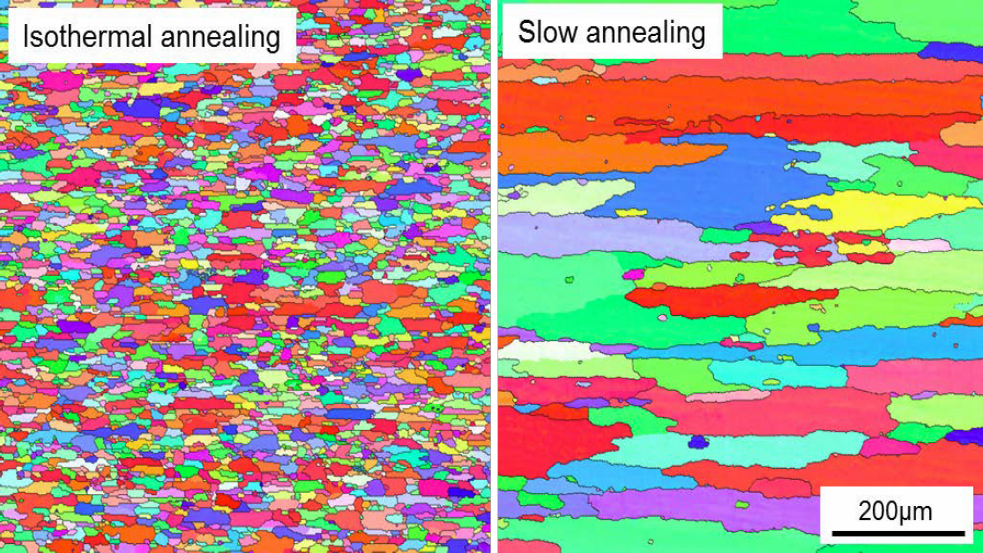
Recrystallization is the formation of new dislocation-free grains within deformed material by the creation and migration of high angle grain boundaries driven by the stored energy introduced by plastic deformation. Dynamic recrystallization (DRX) takes place during deformation at elevated temperature, while static recrystallization (SRX) occurs during intermediate annealing steps between hot and/or cold deformation steps. Recrystallization modifies the grain structure and crystallographic texture of the worked material, it is thus routinely employed to tailor the microstructure, in order to obtain the desired mechanical properties of the final products.
Current research at LMTM covers most of the basic concepts of recrystallization and its related phenomena: work hardening, recovery, precipitation and grain growth etc. We have been working on materials of high and low stacking fault energy (SFE), typical examples are Al alloys, Mg alloys, Steels, Gold alloys, etc. These phenomena are investigated by both experiments and numerical modelling.
Experimentally, DRX is usually investigated by hot compression and torsion on Gleeble 3800 machine at LMTM in both constant and variable conditions, examples include continuous DRX of Al alloys and discontinuous DRX of austenitic stainless steels. Heat treatments can be conducted in salt bath, conventional furnace and Gleeble Machine to study SRX. An interesting example is the post-treatment of samples fabricated by additive manufacturing. The interaction between recrystallization and second-phase particles is also actively studied here. The microstructures at different conditions are usually characterized by SEM/EBSD (scanning electron microscopy/electron backscatter diffraction) and/or TEM (transmission electron microscopy).
Mean filed models have been developed to predict microstructure evolution during and after hot deformation. Our ultimate goal of this research is to develop physically sound, yet computationally cheap modelling tools that can be applied for efficient simulations of metal forming operations in both constant and variable conditions.